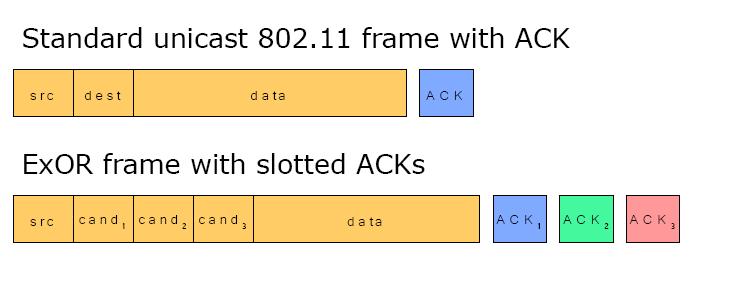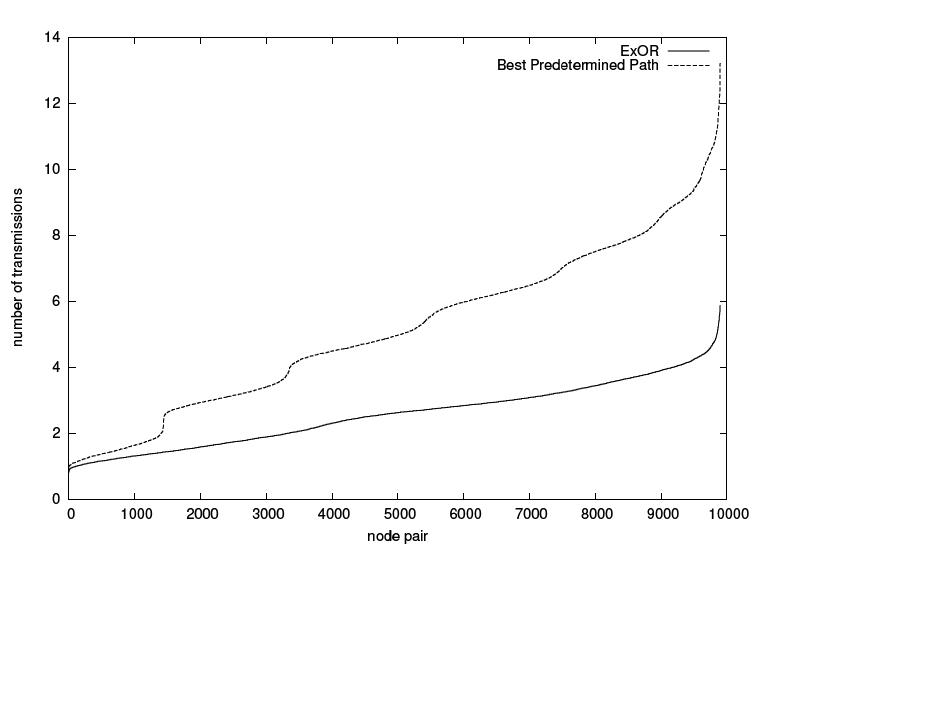ExOR - Extremely Opportunistic Routing: Difference between revisions
| Line 12: | Line 12: | ||
The standard MAC Protocol is used to define the format for data transmission. Therefor its frame has several partitions. |
The standard MAC Protocol is used to define the format for data transmission. Therefor its frame has several partitions. |
||
{| style="float:center; background:transparent; padding:0px; margin:0px;" |
|||
|[[Image:mac-protocol.jpg|thumb|center|300px|Number of Transmissions per node pair]] |
|||
|- |
|||
|} |
|||
== Delivery - Ratio MAtrix == |
== Delivery - Ratio MAtrix == |
||
Revision as of 12:34, 23 July 2007
Description
Extremely Opportunistic Routing is a Routing algorithm that takes advantage of the characteristics of wireless networks. Therefor ExOR determines the path as the packet moves through the network instead of choosing a single route ahead of time.
Implementation
What is neccesary to implement such a routing protocol?
First the standard MAC Protocol has to be modified. And in second every node needs a Delivery-Ratio-Matrix to decide which node would be the best receiver.
Modified MAC Protocol
The standard MAC Protocol is used to define the format for data transmission. Therefor its frame has several partitions.
Delivery - Ratio MAtrix
Performance
In comparison to many well-known Routing - algorithms like OSPF,DSR,AODV Opportunistic routing generally performs better than the a margin of 55%. Depending on how large the network is there are improvements of up to 65%. In generell the greatest benefit out of ExOR is its ability to skip intermediate hops.
The first graphic shows how ExOR reduces the number of Transmissions in a network.


